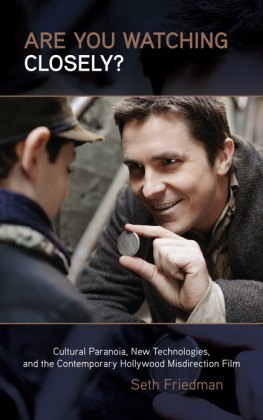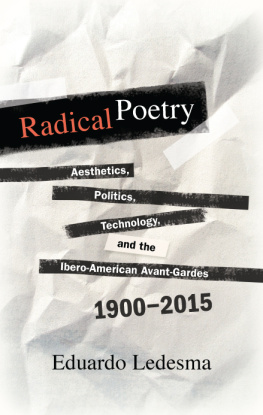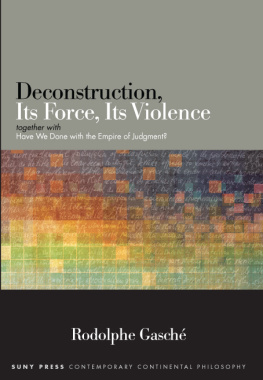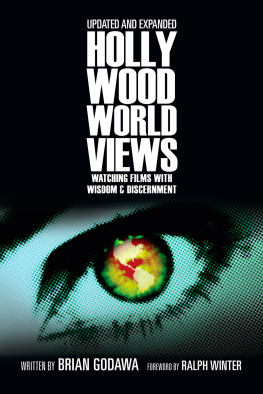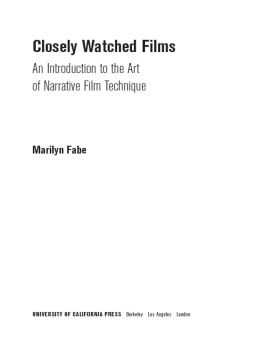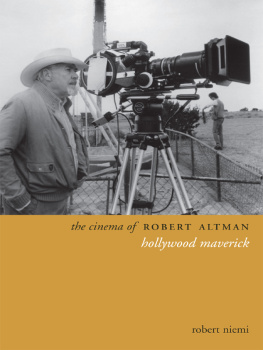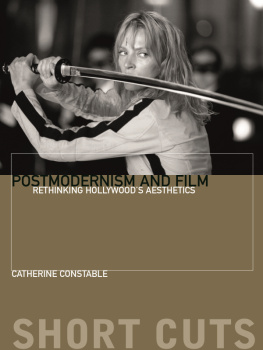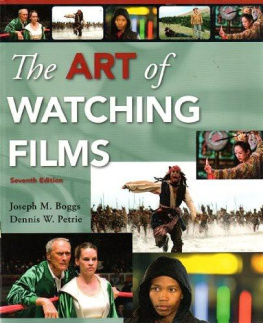Are You
Watching Closely?
Also in the series
William Rothman, editor, Cavell on Film
J. David Slocum, editor, Rebel Without a Cause
Joe McElhaney, The Death of Classical Cinema
Kirsten Moana Thompson, Apocalyptic Dread
Frances Gateward, editor, Seoul Searching
Michael Atkinson, editor, Exile Cinema
Paul S. Moore, Now Playing
Robin L. Murray and Joseph K. Heumann, Ecology and Popular Film
William Rothman, editor, Three Documentary Filmmakers
Sean Griffin, editor, Hetero
Jean-Michel Frodon, editor, Cinema and the Shoah
Carolyn Jess-Cooke and Constantine Verevis, editors, Second Takes
Matthew Solomon, editor, Fantastic Voyages of the Cinematic Imagination
R. Barton Palmer and David Boyd, editors, Hitchcock at the Source
William Rothman, Hitchcock: The Murderous Gaze, Second Edition
Joanna Hearne, Native Recognition
Marc Raymond, Hollywoods New Yorker
Steven Rybin and Will Scheibel, editors, Lonely Places, Dangerous Ground
Claire Perkins and Constantine Verevis, editors, B Is for Bad Cinema
Dominic Lennard, Bad Seeds and Holy Terrors
Rosie Thomas, Bombay before Bollywood
Scott M. MacDonald, Binghamton Babylon
Sudhir Mahadevan, A Very Old Machine
David Greven, Ghost Faces
James S. Williams, Encounters with Godard
William H. Epstein and R. Barton Palmer, editors, Invented Lives, Imagined Communities
Lee Carruthers, Doing Time
Rebecca Meyers, William Rothman, and Charles Warren, editors, Looking with Robert Gardner
Belinda Smaill, Regarding Life
Douglas McFarland and Wesley King, editors, John Huston as Adaptor
R. Barton Palmer, Homer B. Pettey, and Steven M. Sanders, editors, Hitchcocks Moral Gaze
Will Scheibel, American Stranger
Nenad Jovanovic, Brechtian Cinemas
Steven Rybin, Gestures of Love
Amy Rust, Passionate Detachments
Are You
Watching Closely?
Cultural Paranoia, New Technologies,
and the Contemporary Hollywood
Misdirection Film
Seth Friedman
Cover image: From The Prestige . Credit: Newmarket/Photofest
Published by State University of New York Press, Albany
2017 State University of New York
All rights reserved
Printed in the United States of America
No part of this book may be used or reproduced in any manner whatsoever without written permission. No part of this book may be stored in a retrieval system or transmitted in any form or by any means including electronic, electrostatic, magnetic tape, mechanical, photocopying, recording, or otherwise without the prior permission in writing of the publisher.
For information, contact State University of New York Press, Albany, NY
www.sunypress.edu
Production, Eileen Nizer
Marketing, Anne M. Valentine
Library of Congress Cataloging-in-Publication Data
Names: Friedman, Seth, 1976 author.
Title: Are you watching closely? : cultural paranoia, new technologies, and the contemporary Hollywood misdirection film / by Seth Friedman.
Description: Albany : State University of New York Press, [2017] | Series: SUNY series, horizons of cinema | Includes bibliographical references and index.
Identifiers: LCCN 2016039673 (print) | LCCN 2016056195 (ebook) | ISBN 9781438465913 (hardcover : alk. paper) | ISBN 9781438465920 (ebook)
Subjects: LCSH: Motion picturesPhilosophy. | Space and time in motion pictures. | Narration (Rhetoric)
Classification: LCC PN1995 .F7445 2017 (print) | LCC PN1995 (ebook) | DDC 791.4301dc23
LC record available at https://lccn.loc.gov/2016039673
10 9 8 7 6 5 4 3 2 1
For Leo and Clark Friedman
Contents
Illustrations
Acknowledgments
As with Hollywood film production, virtually any academic book is a highly collaborative effort in which key contributors often do not receive the full credit that they deserve. Although devoting this section to thanking those who supported me might not jibe entirely with a book devoted partly to how innovation occurs amid standard genre, narrative, and formal conventions, I chose to leverage it traditionally because it is the least I can do to provide those backers with the recognition that they earned. This book would not have been possible without the valuable assistance of the following people.
This project began with the guidance of my MA thesis director, Matthew Solomon, who generously dedicated hours of his time to helping both to generate and shape the idea into a viable scholarly project. In fact, early work I wrote under his tutelage became an article in Journal of Film and Video 58.4 (Winter 2006): 1628, portions of which appear in . Barbs thorough and perceptive editorial suggestions consistently made my arguments more clear, concise, and persuasive. I am grateful that she lent so much of her seemingly endless energy and prodigious expertise to helping make the dissertation into a readily marketable book. I also want to thank the other prominent members of my dissertation committeeJoan Hawkins and Gregory Wallerfor their insightful and influential feedback throughout the process.
Many of my peers, colleagues, and other professionals provided crucial comments on various iterations of the project that greatly improved it. Travis Vogan and Andrea Kelley both read numerous chapters of the manuscript and gave me sharp suggestions that strengthened a variety of key arguments. Additional peers from my graduate school community deserve special recognition for their generosity when this project was a dissertation and beyond, including Shelley Bradfield, Antonio Goln, Michael Lahey, James Paasche, and Justin Rawlins. During the dissertation phase, Shira Segal was a champion of my work as well as a loyal confidant and comrade in Joans dissertation reading group. I also want to acknowledge the other members of that group throughout my tenure in it for their contributions. Joan again deserves special recognition for sacrificing many of her Saturdays to enhance the work of graduate students. At DePauw University, my colleagues in the Department of Communication and Theatre have graciously welcomed me into a group that is uncommonly supportive and compassionate. Finishing this book was a lot easier than it likely would have been elsewhere because I am fortunate to have found a home in which it is a genuine pleasure to work with each of my colleagues. Of those spectacular peers, Andrew Hayes, Kevin Howley, and Jonathan Nichols-Pethick were particularly instrumental to ensuring that DePauw became the place where I could complete this project with adequate support. Finally, thanks to Murray Pomerance for including me in the Horizons of Cinema series and for handing me over to Eileen Nizer, James Peltz, and Rafael Chaiken, who have been fantastic editors at SUNY Press. I also want to thank them for recruiting the anonymous readers of the manuscript, who offered astute feedback that bolstered the quality of the final product.
Finally, I want to thank my family and non-academic friends for their backing. Yona Belfort, Rich Caponetti, Steve Dorman, and Matt Morgan read papers on this subject in its earliest phases and have consistently believed in my abilities as a scholar. Jeremy Harmon gave me access to numerous films that I needed to use to complete the project. My parents, Jerry and Cheryl Friedman, and my brother, Justin Friedman, have been there for me every step of the way. My sons, Leo and Clark Friedman, provided the inspiration I needed to complete the project. Those two scoundrels immeasurably amplify the quality of everything I do each day.

